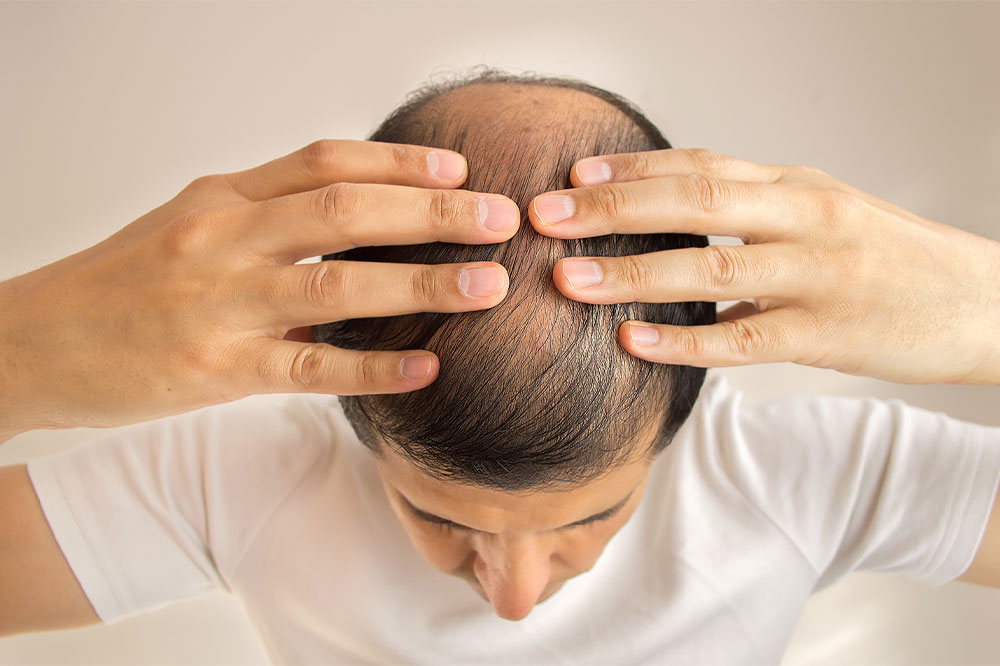
Alopecia areata – causes, symptoms, diagnosis, and home remedies
Alopecia areata, an autoimmune disease, leads to unpredictable hair loss in people. According to statistics, it affects close to 6.8 million people in the country. The severity of hair loss varies from person to person; it can be mild in some people, causing small bald spots. It can cause more extensive bald patches in some cases, and in extreme cases, hair loss is not restricted to just the scalp but the entire body.
Causes
While it is not understood why this happens, the biological reaction of this illness has been studied. It is observed that this condition occurs when the white blood cells start attacking the cells in the hair follicles, leading to reduced hair production.
After research, it is understood that those who have any family history of the disease are more likely to get this condition. It is not just alopecia, but those with family members who have a history of autoimmune disorder are at high risk. While stress may trigger this condition, this is mostly a genetic disorder.
Symptoms
Hair loss is one of the most prominent symptoms of this condition. Patches of hair, usually the size of a coin, fall off. While hair could fall off from any part of the body, it is generally noticed on the scalp first.
Other symptoms to look out for are as follows:
- Itching or burning of the area before any hair loss
- Continuous cycle of hair loss and growth
- Affects nails also; they become rough, lose their shine, become thin and split, white spots and lines appear, pinpoint dents become visible
Some clinical symptoms include the following:
- Growth of white hair around areas that are affected by hair loss.
- Exclamation mark hair, which refer to the short pointy end hair growing in or around the edges of the bald spot.
- Cadaver hair, which refer to the hair breakage that occurs before it even reaches the surface of the skin.
Diagnosis
Anyone experiencing such prominent hair loss should visit a doctor immediately. A health professional can usually spot alopecia without doing any further tests. However, the doctor may suggest a skin biopsy and a blood test to rule out any other forms of autoimmune diseases in some cases.
Treatment
Since the cause of this disease remains unknown, there is no cure for it. However, some treatment options can help with faster hair regrowth on the scalp and other areas. Some of these treatments involve suppressing the immune system so that it does not attack the cells in and around the hair follicles. There is another option called photochemotherapy, which is helpful for those who cannot use any invasive or systemic therapies as treatment options.
Home remedies
According to some studies, there are observations that suggest aromatherapy helps in hair regrowth in some patients.
The study had two sets of people, including the following:
- Those who used an essential oil blend of thyme, rosemary, lavender and cedarwood mixed in carrier oils like jojoba and grapeseed
- Those who only used jojoba and/or grapeseed oil
The people were asked to massage these oils onto their scalp and the bald patches thoroughly for about seven months. Post the experiment timeline, these participants’ scalp photographs were taken, which showed significant hair growth in the first group of people who used essential oils.
Other helpful holistic treatment options include the following:
Garlic extract
Garlic has several medicinal properties, and it has known benefits for alopecia treatment as well. It is known to reduce inflammation and alter the person’s immune system, which may help in this autoimmune condition. Some garlic-infused gels can be applied to the scalp to help with hair growth.
Hypnosis
Since stress is one of the triggers for this condition, hypnosis is a technique that may be beneficial. Through hypnosis, with the help of a trained therapist, a person falls into a trance-like state of consciousness in which they generate a high ability to respond to treatments. This treatment doesn’t help in hair regrowth; however, it helps relax the mind and reduce anxiety and stress, which may help manage alopecia symptoms.
Acupuncture
Electroacupuncture is a form of acupuncture in which electric impulses are passed through needles attached to the skin. While there is still debate on how it helps in hair regrowth, it is understood that a better blood flow may benefit the hair follicles and regrowth of hair.
Tips to manage
Since hair acts as a protective layer on the skin, it is advised that those with this condition be careful about sun exposure. Wear a lot of sunscreen and keep your skin covered if it is too hot outside. Wear sunglasses and a hat to protect the eyes and scalp from excessive burning from the sun.




